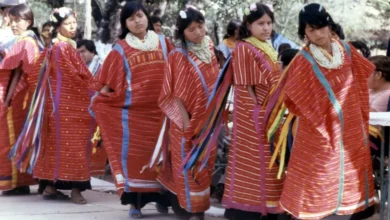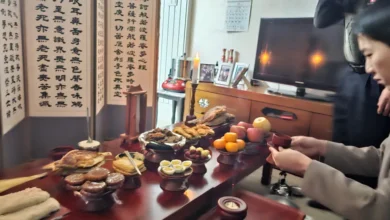The Barong Tagalog, often simply referred to as the barong, is more than just a garment in the Philippines. It is a symbol of national identity, cultural heritage, and pride. While frequently worn for everyday occasions, the barong takes on a special significance when it graces religious and state ceremonies. This article delves into the rich history, unique design elements, and the symbolic weight of the barong in these important events.
A Brief History of the Barong Tagalog
The origins of the barong are often debated, with some theories linking it to pre-colonial Filipino attire. However, the garment as we recognize it today evolved during the Spanish colonial period. The Spanish imposed sumptuary laws that required Filipinos to wear specific types of clothing, often made of flimsy and translucent materials. This was meant to distinguish them from the Spanish colonizers. Over time, Filipinos adapted this requirement, transforming it into the elegant and dignified garment it is today.
The name “Barong Tagalog” literally means “Tagalog attire,” referencing its origin from the Tagalog region, the heart of the Philippines. Initially, barongs were made from fabrics like jusi (a fine, translucent textile made from abaca fibers) or piña (pineapple fiber). These delicate materials added to the barong’s perceived lightness and elegance. Today, while those traditional fabrics remain popular, contemporary barongs are also made from various other materials, catering to different tastes and budgets.
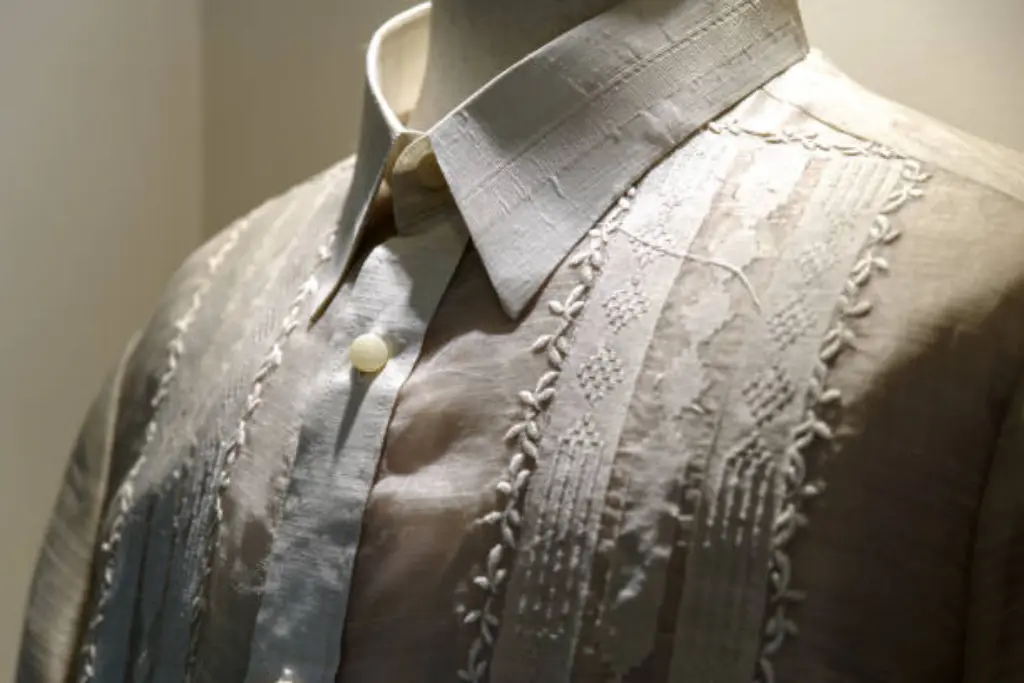
The Distinctive Design Features
Several features set the barong apart from other shirts:
See also The Gho and Kira: A Deep Dive into Bhutanese Attire and Ritual
The Gho and Kira: A Deep Dive into Bhutanese Attire and Ritual- Fabric: The traditional fabrics, jusi and piña, are lightweight, sheer, and often embroidered. Modern variations utilize cotton, linen, or blends of synthetic materials.
- Cut and Style: The barong is usually a long-sleeved shirt, typically reaching the lower hip or mid-thigh. It’s designed to be worn untucked, adding to its relaxed yet formal look.
- Embroidery: Intricate embroidery, often reflecting Filipino culture and nature (such as floral or geometric patterns), is a hallmark of the barong, particularly for formal occasions.
- Collar: It often features a traditional Mandarin collar or a simple fold-down collar, depending on the style.
- Buttons: Buttons are usually small and made of shell, wood, or matching fabric, adding to the understated elegance.
These design elements come together to create a garment that is both comfortable and sophisticated, making it ideal for formal events.
The Barong Tagalog in Religious Ceremonies
The barong Tagalog has found a significant place in religious ceremonies, especially within the Catholic Church, the predominant religion in the Philippines. Its use isn’t uniform across all denominations, but it has become deeply symbolic within the cultural practice of Filipino Catholics.
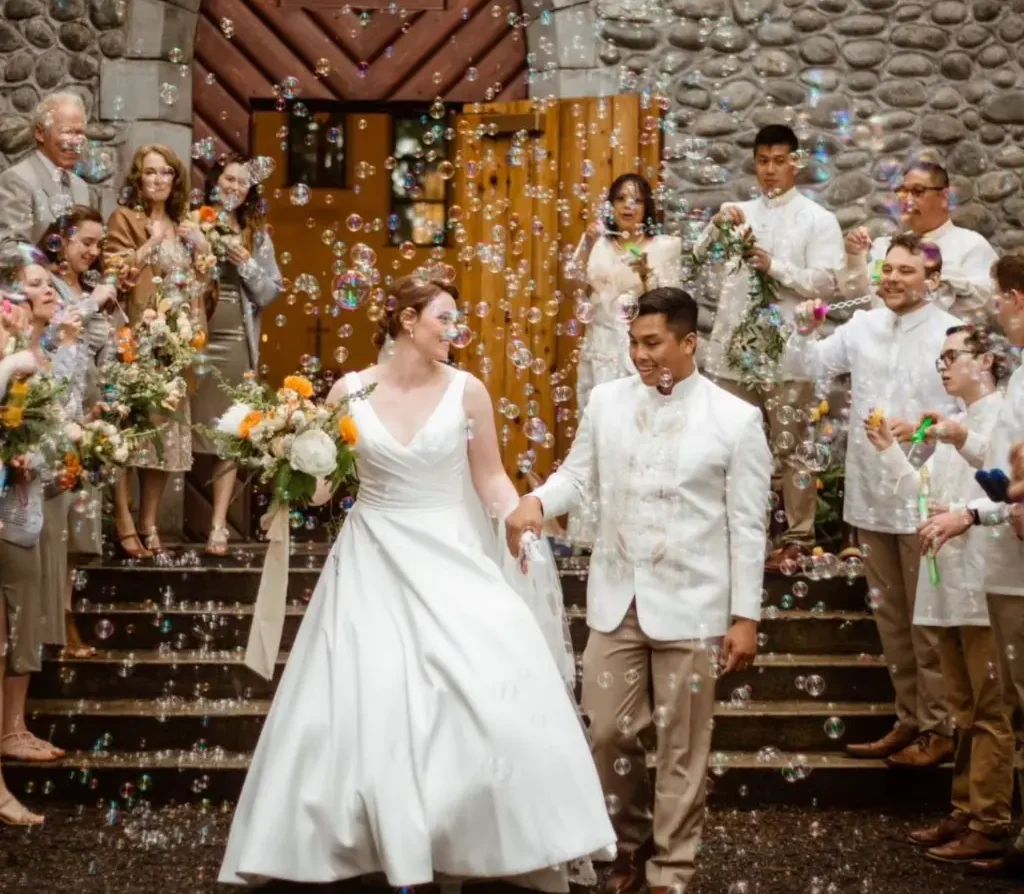
Masses and Church Services
While not mandatory, many Filipino men, especially those participating in special masses or church services, choose to wear the barong. This practice is particularly common during events such as:
- Weddings: The groom and sometimes the male members of the wedding entourage, often wear the barong as a mark of respect and cultural pride.
- Baptisms: Godparents and close male relatives often wear barongs for baptismal ceremonies, signifying the importance of the event.
- Funerals: Wearing a barong to a funeral is a traditional sign of respect for the deceased and their family, presenting a somber yet elegant appearance.
- Special Church Festivities: During town fiestas and patron saint celebrations, many men wear their finest barongs to mass, highlighting the importance of both religious and community values.
The barong, worn in these settings, carries a dual symbolism. It is a mark of respect for the sacred occasion and a proud display of Filipino heritage. The choice to wear traditional clothing demonstrates that attendees are deeply rooted in their faith and cultural identity.
See also The Hanbok’s Role in Korean Ancestral Rituals – Jesa
The Hanbok’s Role in Korean Ancestral Rituals – JesaSignificance of Color and Embroidery in Religious Settings
In religious contexts, the choice of fabric color and embroidery can take on particular significance. While white or cream is common for weddings, other colors may be worn, depending on the individual’s or family’s preference. However, excessively bright colors are often avoided in favor of more muted tones. The embroidery is often kept simple and elegant, reflective of the solemnity of the occasion. The designs, usually floral or geometric, enhance the barong’s overall aesthetic without being overtly ornate.
When individuals wear barongs in church, they often feel a deep sense of connection to their culture and faith. The clothing becomes more than fabric; it’s a visual embodiment of their shared values and traditions.
The Barong Tagalog in State Ceremonies
The barong Tagalog occupies a critical position in state ceremonies in the Philippines. It has been officially designated as the national formal attire, emphasizing its importance in public and government events.
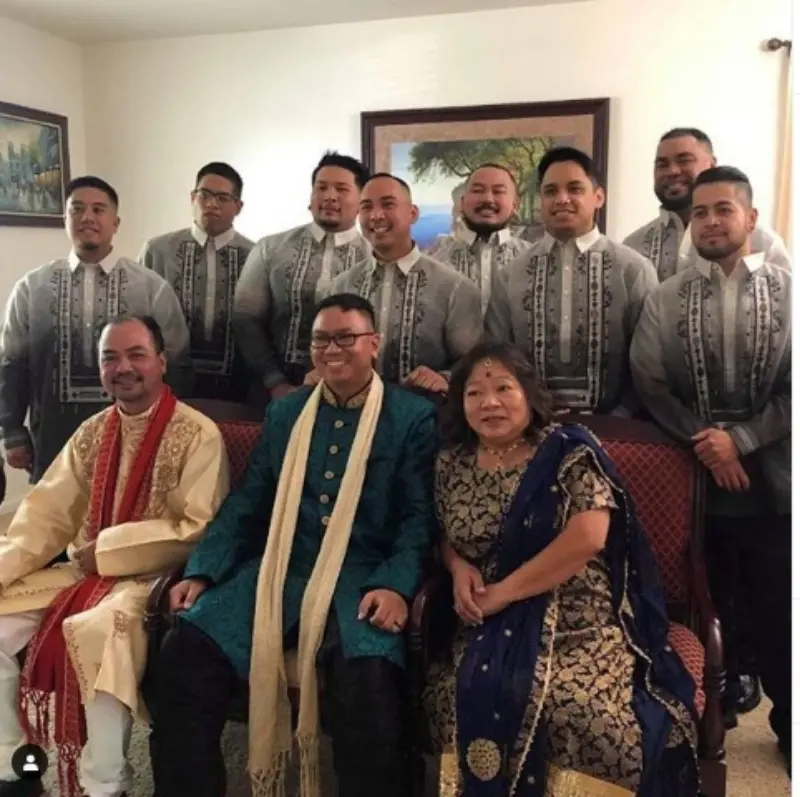
Official Government Events
The barong’s status as the national formal wear is evident in its prevalence during:
- Presidential Inaugurations: The President of the Philippines and other officials frequently wear the barong on this historic day, underscoring its importance as a symbol of leadership and national identity.
- State of the Nation Addresses (SONA): During this annual address, male members of the government, including senators, representatives, and Cabinet members, are typically seen wearing the barong.
- Diplomatic Receptions: Filipino ambassadors and representatives wear the barong when representing the country in foreign lands, showcasing their national pride and cultural heritage.
- National Holidays: During national holidays like Independence Day, men often wear barongs to show their patriotism and reverence for the occasion.
By mandating the barong at these events, the government promotes a sense of national unity and cultural pride. The garment is not just a dress code; it’s a powerful symbol of national identity and the continuity of Filipino traditions.
The Barong’s Role in Promoting Filipino Identity
The strategic use of the barong in state functions is a conscious effort to promote Filipino culture and identity on a global stage. When leaders and representatives wear the barong, they are not just displaying attire; they are showing respect for national traditions and presenting an image of Filipino elegance and sophistication. This practice helps to reinforce cultural pride and national unity within the country.
Variations in Barong Styles for State Ceremonies
While the basic design of the barong remains consistent, variations in fabric, embroidery, and cut often reflect the status or personal preference of the wearer, particularly in state functions. Highly formal settings typically call for barongs made from fine materials like piña, with intricate embroidery. The sophistication of the embroidery can indicate a level of formality and elegance, while the choice of color might reflect personal preference rather than strict protocol. Subtle variations in sleeve style or the collar design might also be present, but the overall aesthetic retains the dignified character of the traditional Filipino garment.
The Modern Evolution of the Barong Tagalog
While deeply rooted in tradition, the barong Tagalog continues to evolve, adapting to modern tastes and trends. This evolution ensures its continued relevance and appeal to the younger generations while maintaining its symbolic importance. Designers have experimented with different colors, patterns, and fabrics, making it more accessible and versatile without sacrificing its traditional elegance.
Contemporary Interpretations
Modern barongs incorporate various innovations:
- Material Variety: Beyond traditional fabrics like jusi and piña, modern barongs are now crafted from cotton, linen, silk, and blends of synthetic materials, catering to different climates, budgets and levels of comfort.
- Color Palette: While traditional barongs are often in neutral tones, contemporary designs incorporate a wider range of colors, from pastels to bolder hues, appealing to a broader demographic.
- Embroidery Styles: While traditional embroidery remains popular, modern barongs also feature contemporary and abstract designs, sometimes incorporating modern geometric patterns or personalized motifs.
- Shorter Lengths and Slimmer Cuts: Some modern barongs have been adapted to be shorter and have a more tailored fit, catering to contemporary preferences while maintaining its overall essence.
These modern adaptations demonstrate the barong’s capacity to remain relevant in the changing landscape of fashion, while maintaining its essence as a symbol of Filipino heritage.
Barong Tagalog and Cultural Preservation
The continued use and adaptation of the barong contribute significantly to cultural preservation in the Philippines. It serves as a tangible link to the past, reminding Filipinos of their heritage while simultaneously adapting to the present. The act of wearing the barong at religious and state events, as well as in everyday life, perpetuates traditions and ensures its legacy is passed down to future generations.
The Barong Tagalog is more than just clothing. It embodies the rich history, unique culture, and vibrant spirit of the Filipino people. Its presence in religious and state ceremonies is a testament to its importance as a symbol of national identity and cultural pride. By wearing the barong in these significant events, Filipinos demonstrate a profound respect for their heritage and reaffirm the timeless elegance of this truly remarkable garment. Whether it’s at a wedding, a presidential inauguration, or simply a Sunday service, the barong remains a powerful expression of Filipino culture and identity.“`

